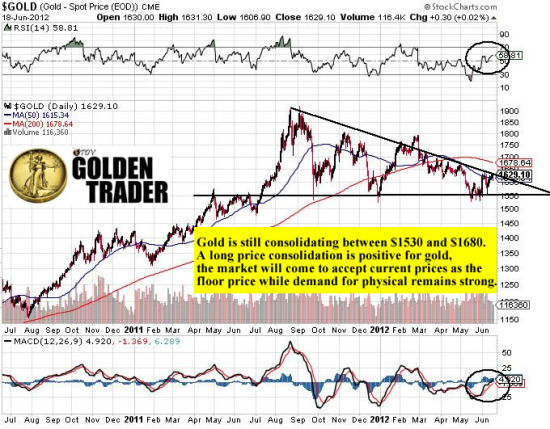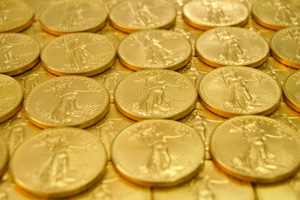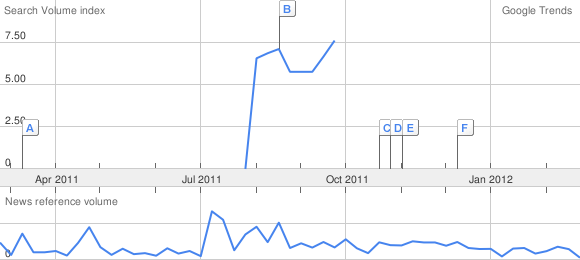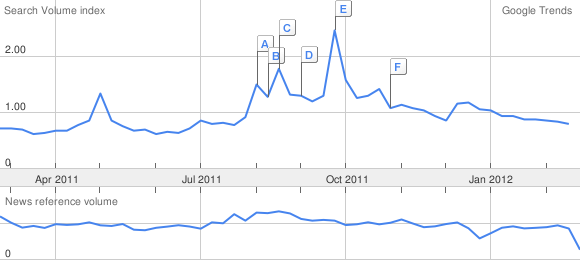 By Vin Maru
By Vin Maru
Financial Alchemy and Fraud In Gold
The gold bull market is alive and well as the summer doldrums come to a close and gold accumulation and trading starts to heat up going into the fall. As the gold bull market matures and it draws more attention from investors all around the world, it does open up the doors for fraud. By now we have heard many stories and accusations about manipulations by central planners, bullion banks, short-sellers and futures traders. The regulators in the West have largely ignored these accusations and have looked the other way when it comes to oversight and creating a fair and legal market place for precious metals.
Financial Fraud in the Gold Market
When it comes to opportunity for fraud, the East is not innocent either. Last month, police in Central China rounded up 33 people suspected of illegal gold-futures trading. The case involved 5,000 investors and at least 380 billion Yuan ($59.62 billion) in which the suspects claimed to be agents of overseas companies dealing in London gold with the promise of huge returns. They promoted investments in Loco London gold and charged exorbitant consulting fees without warning investors of the risks of these transactions or having a signed detailed contract. This had been going on since October 2008 in a low key operation using private bank accounts, mobile phones and online messaging services. Several suspects were caught and detained since March 2, 2012 while more arrests are expected to be made across China as the investigation continues.
As observers of the precious metals market, we know that many Eastern central banks are accumulating physical gold. It is in their best interest to accumulate the physical metal and diversify out of toxic Western paper assets that were sold to them by the western financial puppet masters. It is obvious that Western cartels like Goldman Sacs and JP Morgan are great at creating and selling financial instruments of mass destruction.
One only has to look at the CDO market or the mortgage backed securities sold in the past decade. These paper products were backed by mortgages from over inflated real estate bought by people who could not afford to buy property and were thus set up to fail. Another example is the derivative market which is reportedly over $600T worth of contracts used for “hedging” all the toilet paper assets sold by Western institutions. This includes derivatives and “insurance” products to protect from default or significant changes in valuation on assets such as government bonds, interest rates & credit default swaps and most other paper assets. There is no way these contracts are backed by any real asset and when they are called to perform, the system will collapse. This is most likely why they changed the name and structure of the recent Greek default on bonds; they cannot afford to trigger the derivative time bomb.
Any observer of the financial markets can see that the derivative market is just an insurance scam being sold as a hedging tool for paper products. They cannot and will not every pay out on derivatives because the cascading effect would bring down the system. Yet the paper pushers are still selling these “contract assurances” in volumes in order to create a “financial hedge” of the entire system. When push comes to shove, planners may not let Goldman or JPM collapse because they are TOO connected to fail and they are the ringleaders in pushing paper products for the world to buy in their pump and dump scams.
Masters of Alchemy – Turning Paper in to GOLD
This past week, it was reported that George Soros was unloading investments in major financial stocks and started investing back in gold by way of GLD. We always question the choice of investment vehicles used by large fund managers. As a investor in the gold sector, why wouldn’t anyone stick with the physical metal vs. an ETF such as GLD which is supposedly backed by gold? There have been lots of questions around GLD and its physical holdings, which was primarily sold by JP Morgan, one of the many bullion banks with a questionable short position in the precious metals market (Silver in particular). If the past decade is any indication of paper manipulation (and they are known to have a track record for selling paper products which turn out to be fraudulent), why would anyone buy an ETF like GLD from these Masters of Financial Alchemy when they have the proven ability to turn paper into gold?
When looking at GLD and the many other “un-backed” gold trading vehicles being sold into the market, these products are very questionable on how much gold they have held on storage or available for delivery. Even if there was significant amounts of gold, with the lack of good auditing practices, who knows how much is really owned by the fund. Much of it could be used as collateral, hypothecated, leased out or swapped in contracts by the issuers of these products. When called to perform and deliver the gold, expect questions of ownership and scandals much like MF Global or PFGBest. This is the nature of products created by the Wall Street paper pushers; everything should be questioned eventually. But for now and most of this bull market, GLD will not be questioned or audited. It will be used as another tool for selling an ETF in a particular asset class, one that will become more and more in demand as the bull market for gold evolves. This ETF will be used by the likes of all major trading houses, funds, sovereigns and investors because it is a trading vehicle and a proxy for gold, and it could be used for hedging purposes much like the derivative market.
Going back to why Soros would invents in such a fund: Our suspicion is that Soros is reducing exposure in financials because they have structural problems and have many questions surrounding the assets they hold. While a $50M withdrawal is not much for a fund his size, a purchase of $130M in GLD is significant. His strategy is probably to take these funds and go long on GLD as a hedging tool for the exposure he still has remaining in financials. Soros is just being smart and realizing that he must hedge using gold, even if it has to be with GLD. He knows the paper pushers need GDL as a tool for hedging, so do not expect it to collapse anytime soon. This means more than likely that the “Masters of Financial Alchemy” such as JPM Morgan and Goldman Sacs will continue to sell paper with promises of gold backing and it will get accepted by the market as “Good as Gold”. We at TDV, however, know better.
At this point, it is a very wise move for anyone who doesn’t have any exposure to gold to start getting exposure immediately. If you have not taken this necessary step to protect your assets and hedge against any potential financial storm that may be brewing, you are placing yourself and any remaining assets at risk. Owning the physical is always suggested as a private investor, but if need be look at GLD as a trading and hedging vehicle.
In a strange and ironic way, we need GLD to continue its paper scams as it still legitimizes gold as an investible asset class. The more GLD grows and continues to gain attention, the stronger and longer this bull market will last in precious metal. As much as we realize that GLD could be a scam and owning the physical is the prudent thing to do, we cannot discount the need for GLD as a tool for hedging. There is no way the physical market for gold can absorb demand coming from central banks, pension funds, sovereigns and the general investing public all at the same time. It would make gold reach sky high prices in very short order which would not be healthy for a strong and long gold bull market. Unfortunately, we need GLD and more gold ETFs around the world. There is way too much fiat paper floating around and much more coming, the physical market couldn’t absorb this amount of funny money coming into the physical sector. As much as I hate to say this, GLD is a necessary evil for the longevity of this bull market. There is many more reason why we need more gold backed ETFs and products such as GLD mentioned above, however using this ETF as a hedging tool is a very important one.
In the near future we will look at additional reasons for owning gold through the various ETFs as a tool for trading and hedging. We will also explore the various options available for owning paper or physical gold in the numerous ETFs around the world. This information will be made available on our blog to everyone interested in evaluating gold specific ETFs. If you enjoyed reading this article and are interested in protecting your wealth with precious metals, you can receive our free blog by visiting TDV Golden Trader.


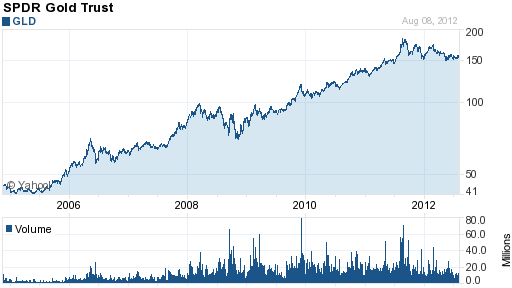

 Each day another gold stock blows up. Last week it was NovaGold (NG) and then Newmont Mining (NEM) and before that a long list too painful to mention. Although I strongly prefer holding physical precious metals over mining companies, the gold stocks that I do own have put in less than a sterling performance.
Each day another gold stock blows up. Last week it was NovaGold (NG) and then Newmont Mining (NEM) and before that a long list too painful to mention. Although I strongly prefer holding physical precious metals over mining companies, the gold stocks that I do own have put in less than a sterling performance.
 By
By 
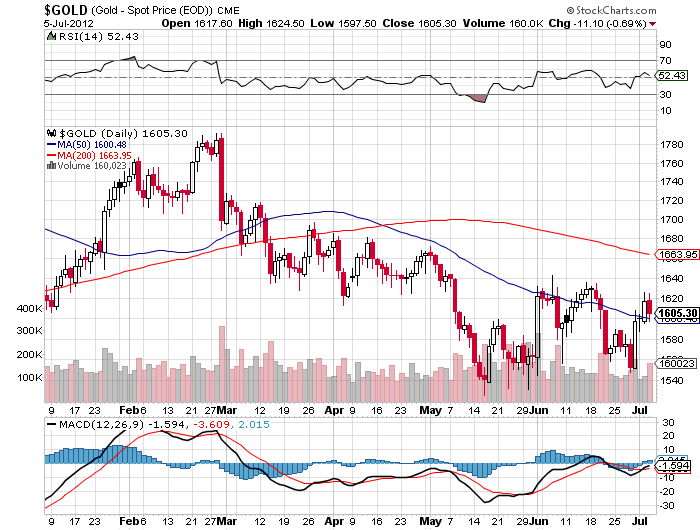
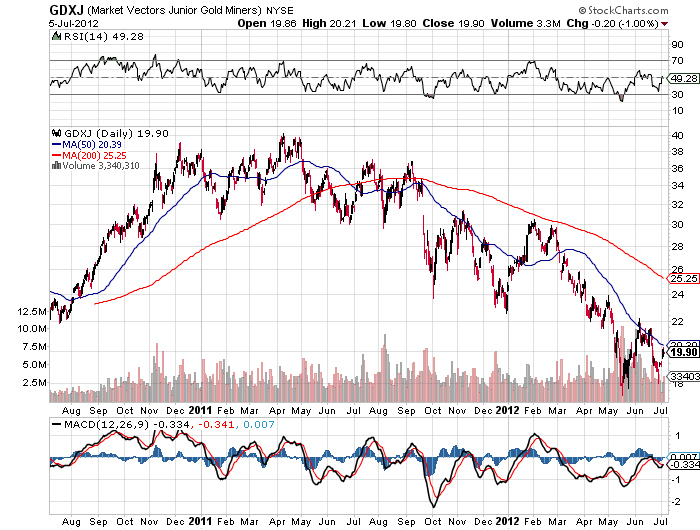
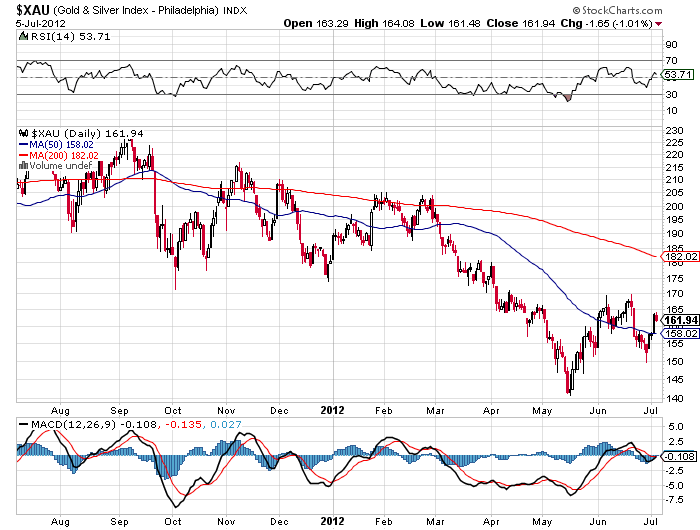

 Although Federal Reserve Chairman Ben Bernanke refuses to acknowledge that gold is money, another major regulatory agency views the value of gold money as a risk free asset for calculation of Tier 1 regulatory capital by banks. Meanwhile, as Ben Bernanke dismisses the value of gold, other central banks around the world continue to increase gold reserves. As the world financial system spirals closer to a complete breakdown, it is the holders of paper currencies that are squarely placed at the highest point of the risk spectrum.
Although Federal Reserve Chairman Ben Bernanke refuses to acknowledge that gold is money, another major regulatory agency views the value of gold money as a risk free asset for calculation of Tier 1 regulatory capital by banks. Meanwhile, as Ben Bernanke dismisses the value of gold, other central banks around the world continue to increase gold reserves. As the world financial system spirals closer to a complete breakdown, it is the holders of paper currencies that are squarely placed at the highest point of the risk spectrum.